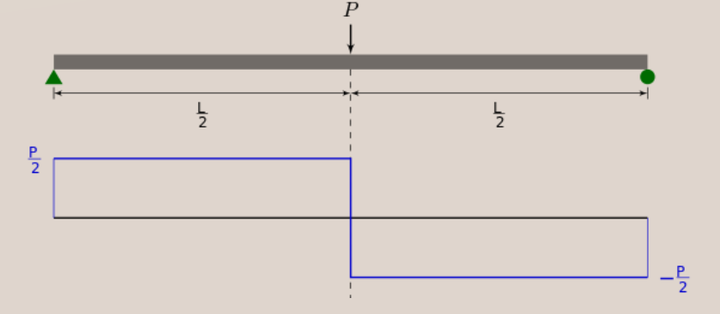What is Shear Force?
By BYJU'S Exam Prep
Updated on: September 25th, 2023

Shear Force is a force which acts tangentially on the body. It is caused by the tangential component of a force acting on the body. Shear resistance offered by the body is used to resist the effect of shear force on the body.
Due to the effect of shear force, the cross-section of the body is deformed, and shear strain will be induced. The shear force also induces shearing stresses in the body. Further, we have provided the important details related to shear force in the upcoming sections.
Download Formulas for GATE Civil Engineering – Solid Mechanics
Table of content
What is Shear Force?
There are generally two types of forces that can act in a body, which can be categorised as Normal force and Shear force.
- Normal Force: Normal force is the force acting perpendicular to the cross-sectional area. It causes longitudinal deformation in the body.
- Shear Force: Shear force is the force acting in the direction parallel to the cross-sectional area. It causes shear deformation in the body.
Shear force is a force caused by the shearing load acting on the body and resulting in shear deformation of the body, hence producing shear strain in the body.
Download Formulas for GATE Civil Engineering – Fluid Mechanics
Shear Force Example
Shear force plays an important role in various ways; based on that, there are many examples related to shear force. Here are some examples listed below relating to shear force
- Force on the side walls of a building due to wind.
- The frictional force between two bodies placed over another is also a shear force.
- Transverse force on beams.
Effect of Shear Force in Beams
Shear force in beams acts in the transverse direction of loading. Due to the unbalanced vertical load in the beams, the shear force is induced. Shear force induces shear stresses in the beams, which can be calculated by shear force per unit cross-sectional area.
Shear Stress=Shear force/Area
Shear force can be positive or negative. The positive shear force causes it to rotate the section in the clockwise direction, and the negative shear force causes it to rotate the section in the anti-clockwise direction. Shear force in beams is also induced due to variation of bending moment along the longitudinal direction of beams.
Download Formulas for GATE Civil Engineering – Environmental Engineering
Shear Force Diagram
The shear force variation along the beam’s longitudinal direction is represented by a diagram known as the shear force diagram. With the help of the shear force diagram, we can find the value of shear force in a particular section. Shear force is equal to the rate of change of bending moment along the section
V=dM/dX
So, we can say that the shear force will be one degree lower than the bending moment; for example, if the bending moment is linear, the Shear force will be constant.
A typical shear force diagram for a beam is shown below:

Relation Between Shear Force And Bending moment
Shear force and Bending moment both are induced due to the effect of loading over the beams and variation of shear force affects the bending moment at a particular section. Hence, we can say that a valid relationship must exist between shear force and bending moment.
The relation between shear force and bending moment can be expressed as V=dM/dX
So, variation of shear force along the beams is the rate of change of bending moment along the beam.
Some Important Points:
- Shear force is zero when the bending moment is constant over the section.
- Shear force can’t be defined at the section where the function of the bending moment is not continuous.
- Shear force is either maximum or minimum, where the second derivative of bending moment is zero.
- Shear force is maximum or minimum, where the bending moment is zero.


